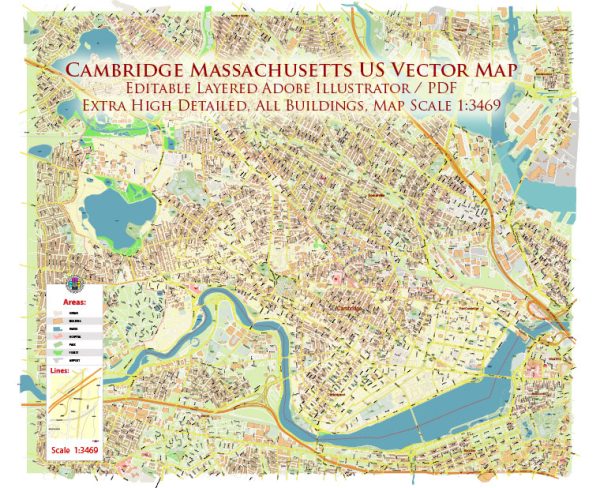Cambridge, Massachusetts has a rich history of urban development that reflects the broader trends in American urbanization. The city’s development can be divided into several key historical periods:
- Early Settlement (17th Century): Cambridge was founded in 1630 and initially settled by English Puritans. The settlement was originally known as “Newe Towne” and later renamed Cambridge in honor of the University of Cambridge in England. The early layout of the town featured a central village green and a grid of streets radiating from it, a design that is still evident in parts of the city today.
- Harvard University’s Influence (17th Century to Present): The establishment of Harvard College in 1636 had a profound impact on Cambridge’s development. The university has been a major driver of the city’s growth and development, shaping its intellectual and cultural character. Harvard Yard, the central green on Harvard’s campus, has been a focal point for the city’s development.
- Industrialization and Innovation (19th Century): During the 19th century, Cambridge experienced significant industrialization and innovation. The city was home to various manufacturing facilities, including the Boston and Lowell Railroad Company and the Athenaeum Press. The presence of these industries led to a growing population and the development of residential neighborhoods.
- Streetcar Suburbs (Late 19th Century): The introduction of streetcar lines in the late 19th century enabled suburban development in Cambridge. People could now live further from their workplaces and easily commute to the city. This led to the growth of residential neighborhoods such as Cambridgeport, West Cambridge (now Arlington), and North Cambridge.
- Post-World War II Development (Mid-20th Century): Like many American cities, Cambridge experienced suburbanization and the construction of highway infrastructure after World War II. The construction of Route 2 and the completion of the Alewife Brook Parkway contributed to changes in the city’s landscape.
- Urban Renewal and Redevelopment (Mid-20th Century): In the mid-20th century, Cambridge, like many other American cities, underwent urban renewal efforts. The city saw the construction of large housing developments, including high-rise apartment buildings, as well as the expansion of institutions like MIT and Harvard. These efforts often faced opposition from local communities concerned about the preservation of historic neighborhoods.
- Tech and Biotech Hub (Late 20th Century to Present): Cambridge has become a hub for technology and biotechnology companies. Kendall Square, in particular, has developed into a major center for innovation and research. This has attracted a highly educated and skilled workforce and reshaped the city’s economic landscape.
- Preservation and Planning (Late 20th Century to Present): In recent decades, Cambridge has focused on preserving its historical character while promoting smart urban planning. There has been an emphasis on mixed-use development, affordable housing, and sustainable transportation options. The city’s development is influenced by a commitment to sustainable and environmentally friendly practices.
- Public Spaces and Open Parks: Cambridge is known for its numerous public spaces and parks, including the Charles River Esplanade, Danehy Park, and the Alewife Reservation. These green spaces provide opportunities for recreation and contribute to the city’s quality of life.
Cambridge’s urban development has been shaped by its historical ties to education and innovation, as well as its commitment to preserving its rich architectural and cultural heritage. The city continues to evolve, balancing the need for economic growth with the desire to maintain its unique character.


 Author: Kirill Shrayber, Ph.D.
Author: Kirill Shrayber, Ph.D.